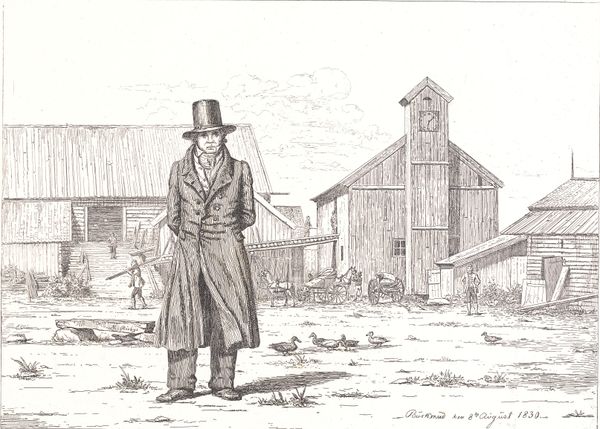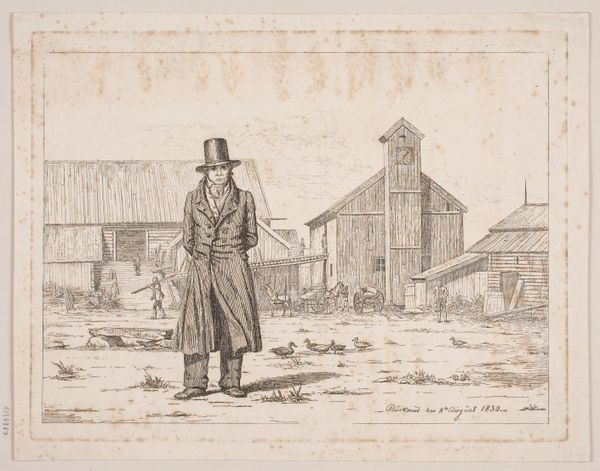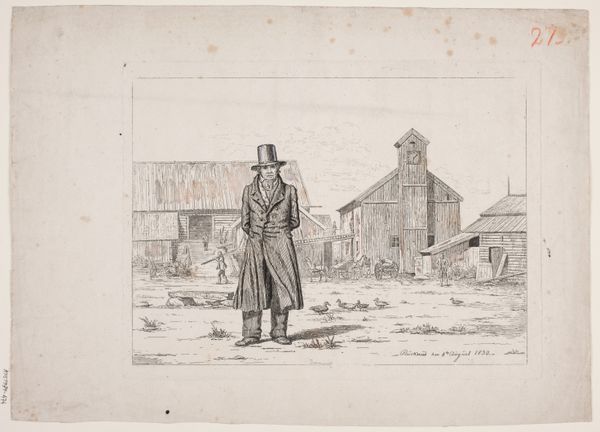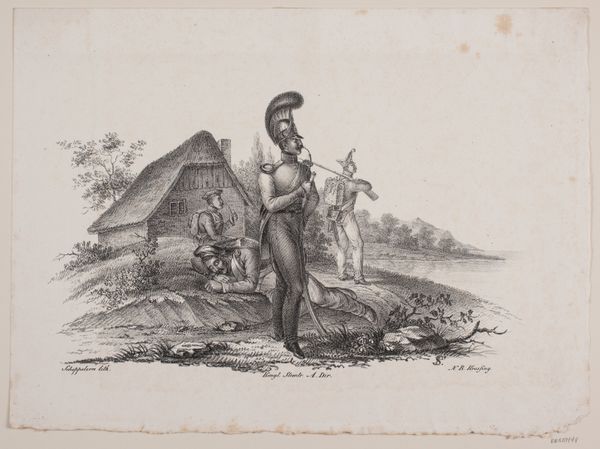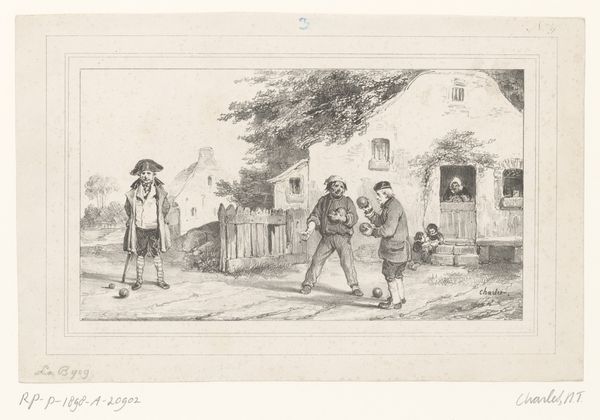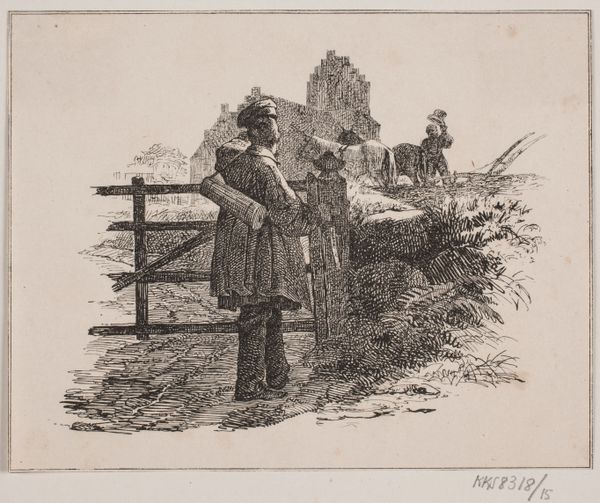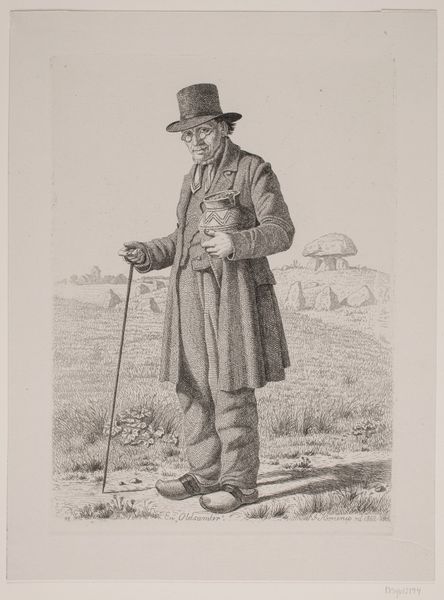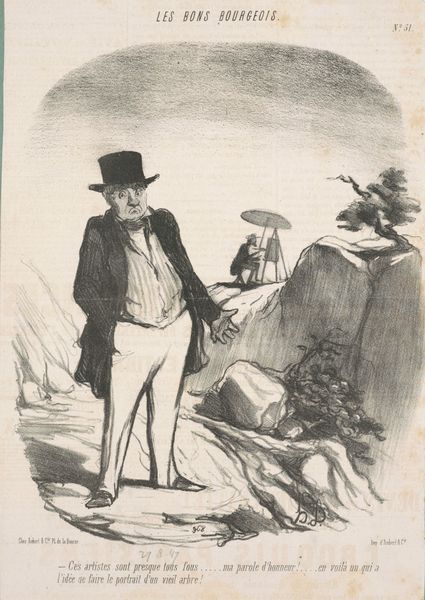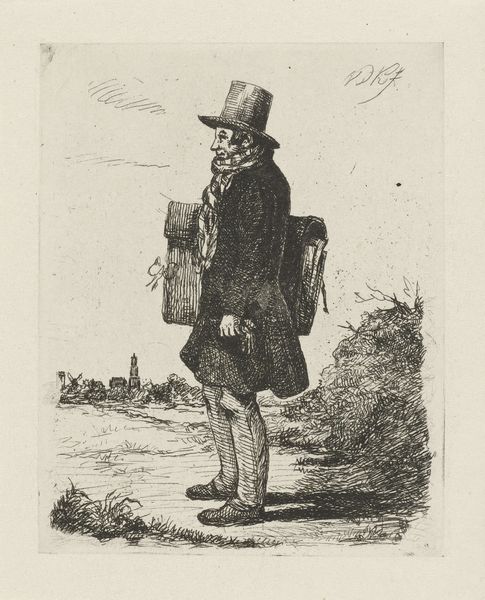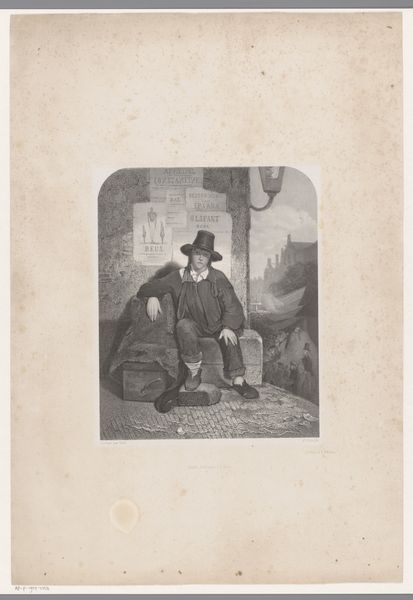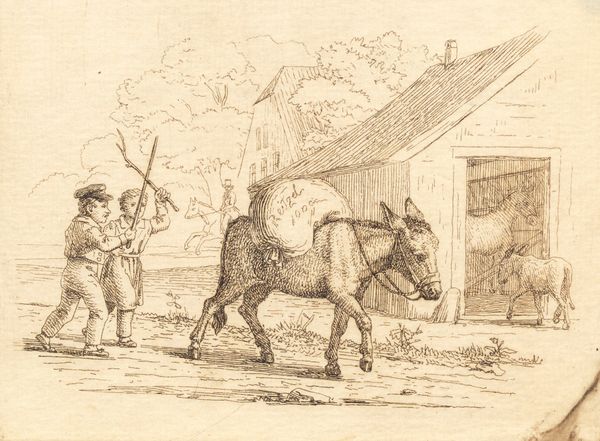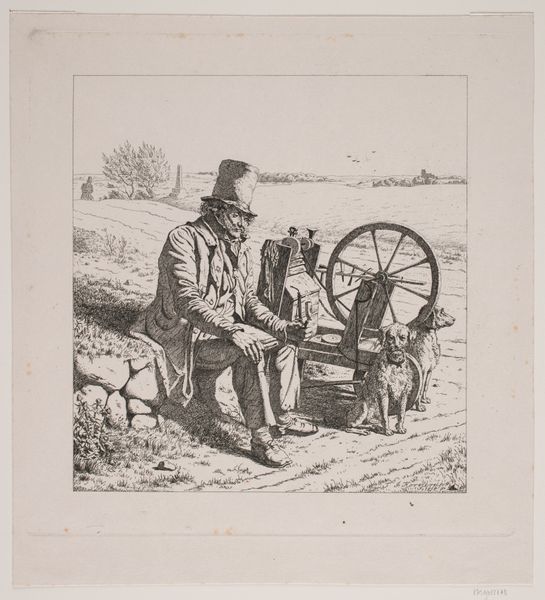
drawing, print, etching
#
portrait
#
drawing
# print
#
etching
#
landscape
#
romanticism
#
genre-painting
Dimensions: 198 mm (height) x 262 mm (width) (plademaal)
Curator: Let's consider this etching from 1830 by Martinus Rørbye. The title translates to "Peter Collet at the Copperworks Buskerud in Norway". It’s held here at the SMK. Editor: It has a striking stillness, almost theatrical. The dark lines create a somber tone, though the ducks waddling about add a touch of mundane realism. Is Peter Collet perhaps observing his own dominion? Curator: He was the owner of this copperworks. Rørbye portrays him not as a man of labor, but of capital, standing separate yet integral to the site. The backdrop reveals much activity, placing Collet within a visual narrative of industry. Editor: I see a romanticised hierarchy. The workers are diminutive and part of the broader landscape of production, whilst Collet commands a powerful foreground, aloof in his top hat and greatcoat. What message did this hierarchy send, and for whom? Curator: The Romantic movement influenced depictions of industry at the time, often presenting landscapes in a way that glossed over the harsh realities for the laboring class. However, it is a business portrait commissioned, likely meant for Collet’s private appreciation of the work. Editor: Exactly. It perpetuates a narrative of idyllic industry with no grit, soot, or real human struggle, though the workers in the background did contribute to the country’s economic expansion and deserve an appreciation and recognition beyond the aesthetic industrialization. It shows that even in what seems like neutral portraiture, one can observe existing sociopolitical norms. Curator: It is an interesting exercise to place it in the context of visual representations of labor, which would undergo radical shifts. This piece reveals how social position could be encoded through artistic representation. Editor: And invites us to consider whose stories are amplified, or obscured, in the narratives that shape our understanding of history. Curator: Absolutely, an etching such as this, then, is not a mirror but a refracting lens for the cultural forces at work.
Comments
No comments
Be the first to comment and join the conversation on the ultimate creative platform.
